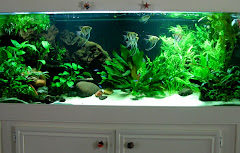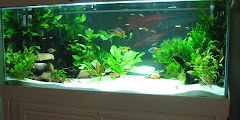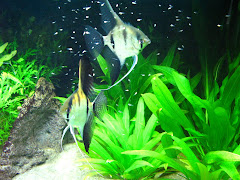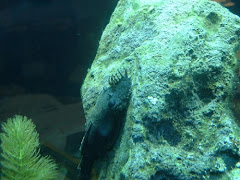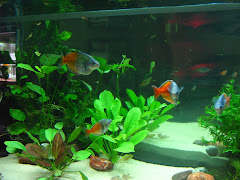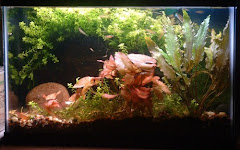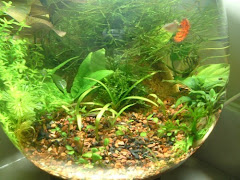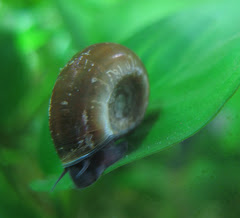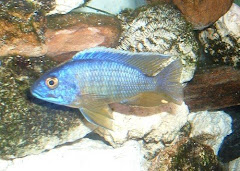
The darling goldfish trio keeping the cycle in the 150 are now parked in a ten-gallon bare aquarium until I work something out for them. I am fond of them and they are very attractive specimens, but I just don't have a good place for them.
I could bring them to work with the mollies, but that is not a satisfactory arrangement - the tank at work is set up specifically for mollies, with some salt, which is fine for the goldfish, but it is too warm (80F) and has quite a lot of tender plants, which would be destroyed by the goldfish, most likely. The goldfish would also eat the molly babies that we have so far. That's not a huge issue, but the patients at work like seeing the babies in the tank, and it adds something to the mood of the tank to have little baby fish tooling around. I've become a snob, and though many people mix goldfish with other tropical species often enough without any apparent trouble, I think a goldfish tank ought to have sand, no live plants (except perhaps some hardy and thick-leaved Anubias), and be cool and unheated. The decor is lmited only by imagination and safety for the fish. You can get quite fun with it when it comes to goldfish, at least for me.
My coworker is interested in setting up a tank and it could be that she will get herself something set up soon, in which case she can start with these three goldfish. I recommended at least a 29-gal, which is going to seem big for these small fish, but they should grow, and she can get her cycle going, with assistance from some of the biobugs from one of my tank filters. She may be able to add a few more small fantails in the future, but goldfish need a lot of gallons per fish.
That said, I am going to do my best to keep my opinions to myself and let her do what she wants - if she decides to throw some tetras in there with them, so be it, and it could work out just fine - it is only for me, who fusses over every detail and agonizes over every tankmate, that things go south and fish die. People who have a more relaxed approach to life, or at least to aquariums, often have perfectly wonderful setups that go strong for years and years, even though they don't have experience with fishkeeping.
Anyway, the goldfish are a bit confused about the transfer, but they are doing fine so far. I have to say they made the perfect resident for the 150 all these months, almost four, while I have gotten my ducks in a row and waited for the funds to stock it like I wanted. They have held the cycle nicely and been charming little outgoing fellows.
The very best thing about them is that in this very large tank with rocks and hiding places they were absolutely no trouble to catch and remove once the time came. If I had tried using mollies or something else they'd have dashed for cover the second the net hit the water, but these guys just toddled right over to investigate - I had all three out and in a bucket in under 30 seconds. I was almost embarrassed for them, since even the simplest, smallest, most biologically primitive fish would hide from a "predator" like a net, but these goldfish, I suppose due to having been tank bred and raised by humans for a couple of centuries, no longer fear the net at all. Oh well - I am glad I chose to use them to keep the cycle in this tank. It worked out quite well indeed. Maybe someday I will convert the 150 over to a large goldfish tank and raise some quality supersized specimens of my own. They are enjoyable and easy to manage.
























